Trossachs and Teith is one of the seven wards used to elect members of the Stirling council. It elects three councillors.
Trossachs and Teith is one of the seven wards used to elect members of the Stirling council. It elects three councillors.
| Election | Councillors | |||||
|---|---|---|---|---|---|---|
| 2007 | Fergus Wood (SNP) | Paul Owens (Labour) | Tony Ffinch (Conservative) | |||
| 2012 | Alycia Hayes (SNP) | Martin Earl (Conservative) | ||||
| 2017 | Evelyn Tweed (SNP) | Jeremy McDonald (Conservative) | ||||
| 2022 | Gene Maxwell (SNP) | Elaine Watterson (Conservative) | ||||
2017 Stirling Council election [2]
| Party | Candidate | FPv% | Count | |||||||
|---|---|---|---|---|---|---|---|---|---|---|
| 1 | 2 | 3 | 4 | 5 | 6 | 7 | ||||
| Conservative | Martin Earl (incumbent) | 38.1 | 2,027 | |||||||
| SNP | Evelyn Tweed | 20.5 | 1,090 | 1,105.8 | 1,112.5 | 1,227.6 | 1,306.6 | 1,311.7 | 2,077.4 | |
| SNP | Fergus Wood (incumbent) | 14.6 | 776 | 799.4 | 809.1 | 850.8 | 890.2 | 891.7 | ||
| Conservative | Jeremy McDonald | 11.9 | 632 | 1,210.5 | 1,250.7 | 1,286.6 | 1,378.5 | |||
| Labour | Gerry McGarvey | 6.1 | 326 | 342.2 | 391.3 | 478.6 | ||||
| Scottish Green | Gordon Cowtan | 5.4 | 286 | 296.3 | 347.7 | |||||
| Liberal Democrats | Galen Milne | 3.3 | 177 | 191.5 | ||||||
| Electorate: 9,147 Valid: 5,314 Spoilt: 118 Quota: 1,329 Turnout: 59.4% | ||||||||||
2012 Stirling Council election [4]
| Party | Candidate | FPv% | Count | ||||||
|---|---|---|---|---|---|---|---|---|---|
| 1 | 2 | 3 | 4 | 5 | 6 | ||||
| Conservative | Martin Earl | 30.29% | 1,285 | ||||||
| SNP | Alycia Hayes | 23.76% | 1,008 | 1,027.2 | 1,054.1 | 1,109.6 | |||
| SNP | Fergus Wood (incumbent) | 21.28% | 903 | 925.7 | 947.3 | 984.3 | 1,023.6 | 1,283.2 | |
| Labour | Gerry McGarvey | 15.84% | 672 | 690.3 | 732.5 | 804.1 | 808.1 | ||
| Independent | Jack Black | 5.23% | 222 | 260.2 | 307.7 | ||||
| Liberal Democrats | Galen Milne | 3.61% | 153 | 199.9 | |||||
| Electorate: 8,464 Valid: 4,243 Spoilt: 72 Quota: 1,061 Turnout: 4,315 (50.13%) | |||||||||
2007 Stirling Council election [5]
| Party | Candidate | FPv% | % | Seat | Count | |
|---|---|---|---|---|---|---|
| SNP | Fergus Wood | 1,789 | 33.0 | 1 | 1 | |
| Conservative | Tony Ffinch | 1,065 | 19.7 | 2 | 4 | |
| Labour | Paul Owens | 839 | 15.5 | 3 | 4 | |
| Conservative | Mark Kenyon | 782 | 14.4 | |||
| Liberal Democrats | Galen Milne | 568 | 10.5 | |||
| Independent | Charles Grant | 373 | 6.9 | |||

Local government in Scotland comprises thirty-two local authorities, commonly referred to as councils. Each council provides public services, including education, social care, waste management, libraries and planning. Councils receive the majority of their funding from the Scottish Government, but operate independently and are accountable to their local electorates. Councils raise additional income via the Council Tax, a locally variable domestic property tax, and Business rates, a non-domestic property tax.
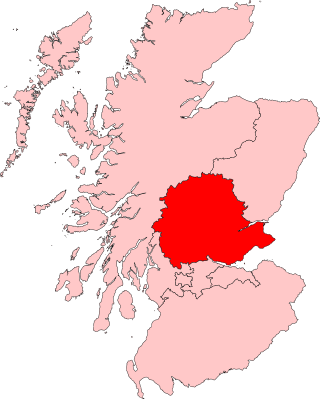
Mid Scotland and Fife is one of the eight electoral regions of the Scottish Parliament which were created in 1999. Nine of the parliament's 73 first past the post constituencies are sub-divisions of the region and it elects seven of the 56 additional-member Members of the Scottish Parliament (MSPs). Thus it elects a total of 16 MSPs.

Stirling was a county constituency of the House of Commons of the Parliament of the United Kingdom. It elected one Member of Parliament (MP) by the first past the post system of election.

Ochil and South Perthshire was a county constituency of the House of Commons of the Parliament of the United Kingdom. It elected one Member of Parliament (MP) by the first-past-the-post system of election.

Ochil was a constituency of the Scottish Parliament (Holyrood). It elected one Member of the Scottish Parliament (MSP) by the plurality method of election. Also, it was one of nine constituencies in the Mid Scotland and Fife electoral region, which elected seven additional members, in addition to the nine constituency MSPs, to produce a form of proportional representation for the region as a whole.

Kirkcaldy is a constituency of the Scottish Parliament (Holyrood). It elects one Member of the Scottish Parliament (MSP) by the plurality method of election. Also, it is one of nine constituencies in the Mid Scotland and Fife electoral region, which elects seven additional members, in addition to nine constituency MSPs, to produce a form of proportional representation for the region as a whole.

North East Fife is a constituency of the Scottish Parliament (Holyrood) covering part of the council area of Fife. It elects one Member of the Scottish Parliament (MSP) by the plurality method of election. It is additionally one of nine constituencies in the Mid Scotland and Fife electoral region, which elects seven additional members, in addition to the nine constituency MSPs, to produce a form of proportional representation for the region as a whole.

Stirling is a constituency of the Scottish Parliament (Holyrood) covering part of the council area of Stirling. It elects one Member of the Scottish Parliament (MSP) by the plurality method of election. It is one of nine constituencies in the Mid Scotland and Fife electoral region, which elects seven additional members, in addition to the nine constituency MSPs, to produce a form of proportional representation for the region as a whole.
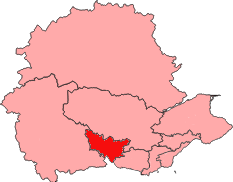
Clackmannanshire and Dunblane is a constituency of the Scottish Parliament (Holyrood) covering part of the Stirling council area and the entirety of Clackmannanshire. It elects one Member of the Scottish Parliament (MSP) by the plurality method of election. It is one of nine constituencies in the Mid Scotland and Fife electoral region, which elects seven additional members, in addition to the nine constituency MSPs, to produce a form of proportional representation for the region as a whole. Created in 2011, the constituency covers much of the area previously in the abolished Ochil constituency.
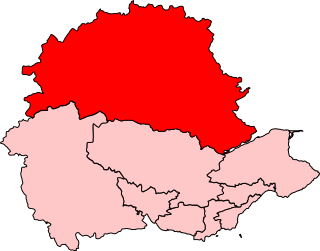
Perthshire North is a constituency of the Scottish Parliament (Holyrood) covering part of the council area of Perth and Kinross. It elects one Member of the Scottish Parliament (MSP) by the plurality method of election. It is one of nine constituencies in the Mid Scotland and Fife electoral region, which elects seven additional members, in addition to the nine constituency MSPs, to produce a form of proportional representation for the region as a whole.

Cowdenbeath is a constituency of the Scottish Parliament (Holyrood) covering part of the council area of Fife. It elects one Member of the Scottish Parliament (MSP) by the plurality method of election. It is one of nine constituencies in the Mid Scotland and Fife electoral region, which elects seven additional members, in addition to the nine constituency MSPs, to produce a form of proportional representation for the region as a whole.

The 2017 Stirling Council election was held on 4 May 2017, the same day as the 31 other local authorities in Scotland. The election used the seven wards created under the Local Governance (Scotland) Act 2004, with 23 councillors being elected, an increase of 1 from 2012. Each ward elected either 3 or 4 members, using the STV electoral system. Following the Fifth Electoral Review by the Local Government Boundary Commission for Scotland, minor changes were made to several of the ward boundaries and one additional Councillor was added, increasing the total number of Councillors from twenty-two to twenty-three.

Forth and Endrick is one of the seven wards used to elect members of the Stirling Council. It elects three Councillors.
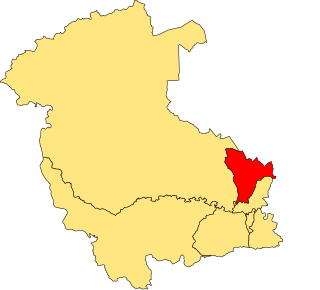
Dunblane and Bridge of Allan is one of the seven wards used to elect members of the Stirling Council. It elects four Councillors.
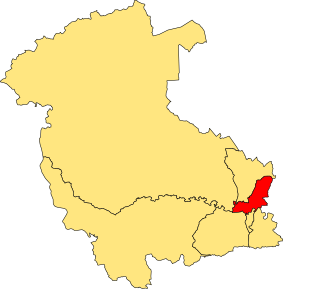
Stirling North is one of the seven wards used to elect members of the Stirling Council. Originally known as Castle from its creation in 2007, it returned three councillors and covered northern parts of the small city of Stirling, including Causewayhead, Cornton, Raploch and the town centre, as well as Stirling Castle from which the name derived. A 2017 national boundary review saw the ward become larger; this new territory consisted largely of an uninhabited area on the western slopes of the Ochil Hills and a rural area south of Blairlogie, but also incorporating the Cambuskenneth and Riverside neighbourhoods, with an increase in the electorate and an additional seat. It was also re-named at that time to the more descriptive Stirling North title. In 2019, the ward had a population of 15,885.

Stirling West is one of the seven wards used to elect members of the Stirling Council. It elects three Councillors.
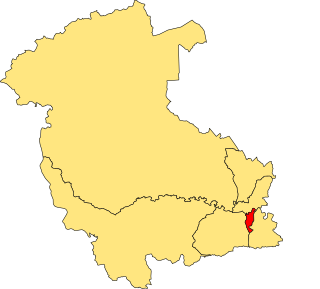
Stirling East is one of the seven wards used to elect members of the Stirling Council. It elects three Councillors.
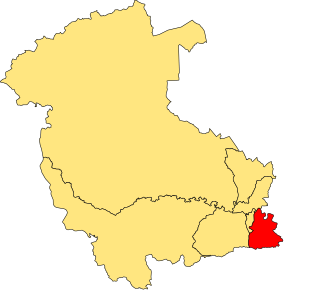
Bannockburn is one of the seven wards used to elect members of the Stirling Council. It elects three Councillors.

Troup is one of the nineteen wards used to elect members of the Aberdeenshire Council. It elects three Councillors.
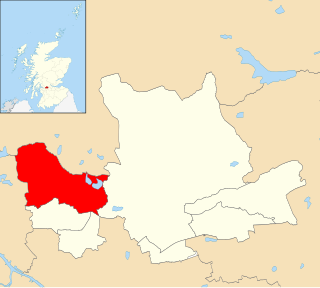
Milngavie is one of the seven wards used to elect members of the East Dunbartonshire Council. It elects three Councillors. Its territory consists of the entire burgh of Milngavie, and a sparsely populated hinterland to its north-west, bordering the West Dunbartonshire and Stirling local authority areas. In 2020, the ward had a population of 13,572.
{{cite web}}: CS1 maint: archived copy as title (link)